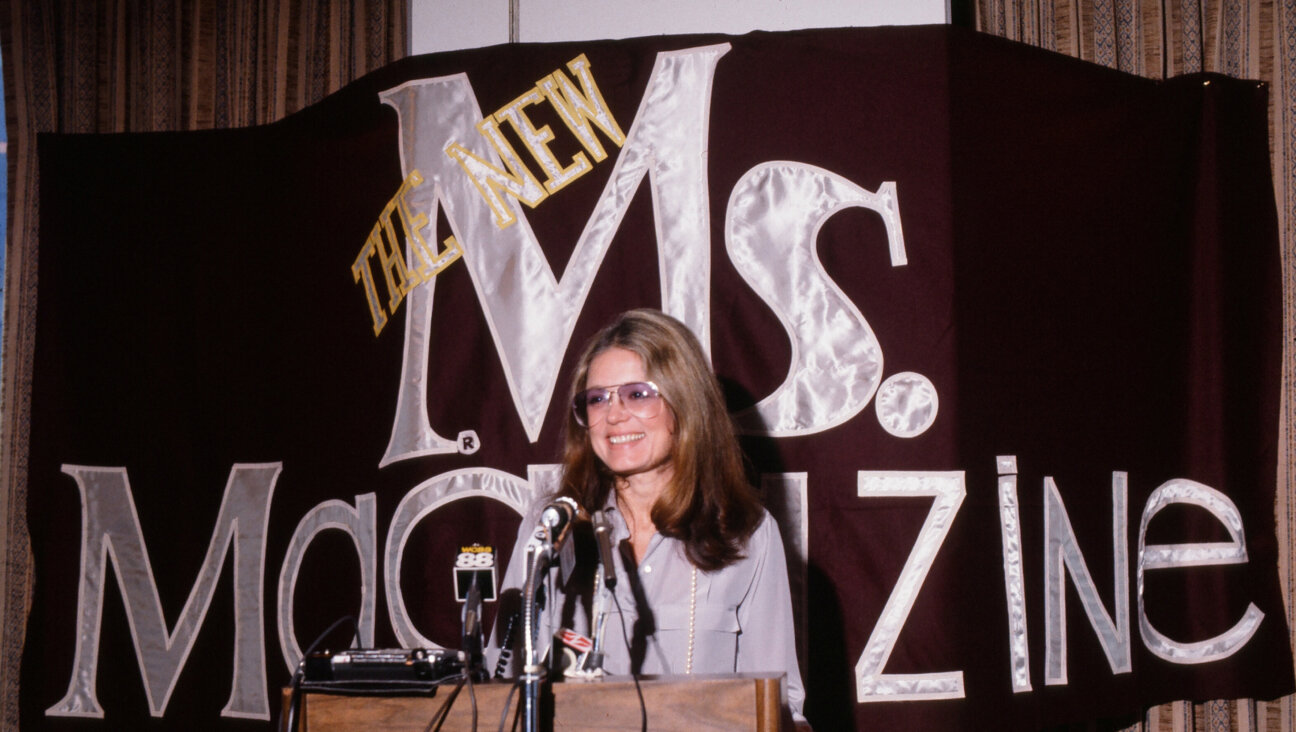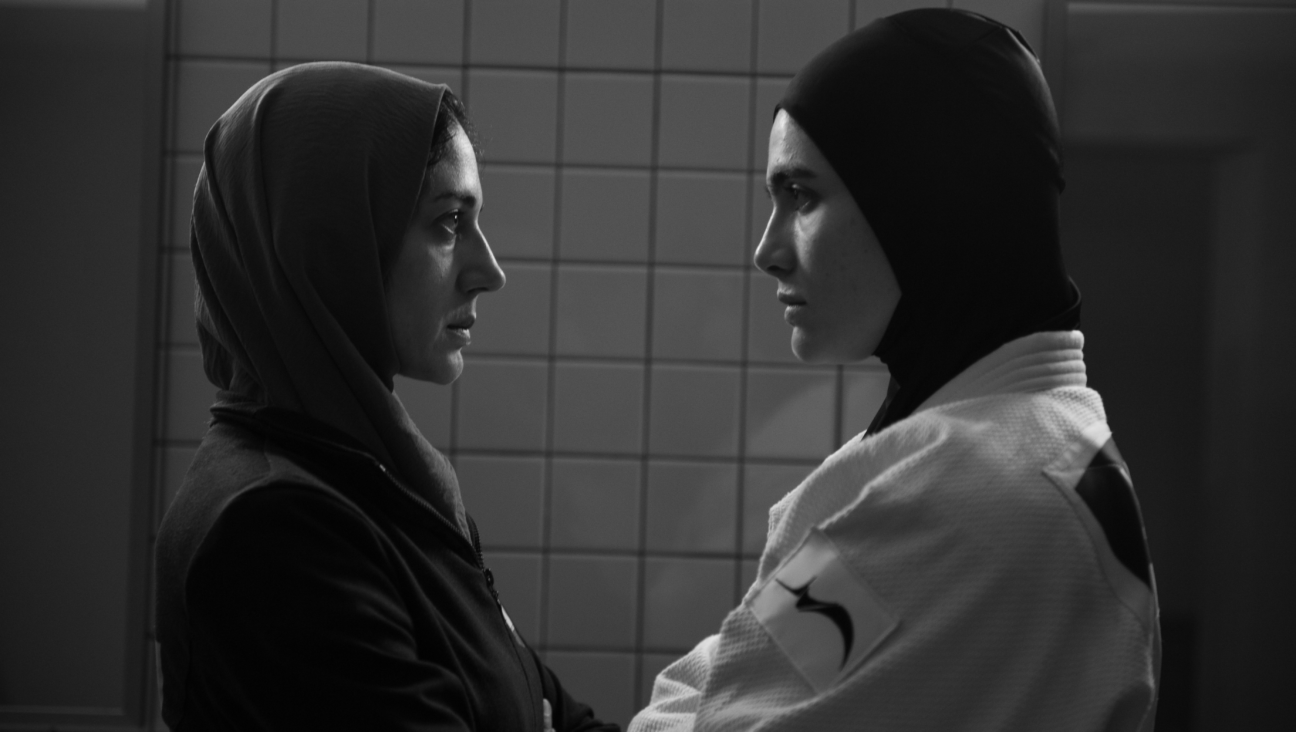5 Questions For Documentary Filmmaker Nathaniel Kahn

Filmmaker Nathaniel Kahn. Image by Getty Images/Daniel Zuchnik/Contributor
Nathaniel Kahn, director of the Oscar-nominated documentary “My Architect” about his relationship with his architect father, Louis Kahn, thinks we’re confusing value with asking price. Over the last few years, Kahn infiltrated auction houses, the private galleries of well-heeled collectors and the grubby or extravagant studios of contemporary artists to get a panoramic view of the multi-billion dollar art market. His latest film, “The Price of Everything” premiering on HBO November 12 and out now in select cinemas nationwide, offers a candid look inside these closed-off and moneyed worlds. The Forward spoke with Kahn over the phone about the pitfalls of our culture of commoditizing and how his portrait of the state of the arts came together.

“The Price of Everything” director Nathaniel Kahn. Image by Photo by Raymond Meier.
PJ Grisar: You’ve directed a film about your father, films about space and the environment and even one about the history of the telescope. What drew you to the art world this time around?
Nathaniel Kahn: Growing up in a family of artists, I’ve always been exposed to this world of art and money and the complicated relationship between them, and yet in the last several years seeing how this age-old dance between art and money has become so incredibly intensified. We now see art being used not just for aesthetic reasons or even as an investment tool, but actually as a speculative tool. It seemed like things were escalating in a really scary yet fascinating direction that I think reveals our current obsessions. Being able to explore those through the art world seemed like a very interesting subject for a film.
Going in did you know who your cast of characters would be? How did you come to include someone like the painter Larry Poons who is outside the world of the big art market?
This is a vérité film in the sense that there is no script going in. One has a sense of where one wants to go — you have notions and ideas and directions. But the experiences of actually making the film changes the direction fundamentally. And it’s not just shooting, it’s also putting it on the editing table and looking at the material and the material starts talking to you and it begins to demand what it needs to work. I had filmed a number of people already from the auction world and the artists and I realized that something profound was missing. I began to ask around and I told some gallerist friends of mine, “I really want an artist who was once at the top of the art market, maybe somebody from the ‘60s. Somebody who fell out of that white-hot spotlight and who had suffered for a number of years but had kept doing the work. And maybe they live off-the-grid. Maybe they live upstate. Maybe they live in a house that is kind of an old house and they have a barn out back and it would be great if they had a big shock of hair.” And this woman said to me “stop, stop, stop! I know exactly who you’re talking about, you have to meet Larry Poons.” When we went to film and Larry came out on the porch the moment I saw him standing there with his coffee cup with this great shock of white hair, it was a dream.
Then of course the question was: What was his art like now? I had seen the art he did back in the ‘60s, but I was sort of anxious about what it would be like. I was not disappointed as we walked into this temple of art that is his studio. He paints under intense natural lights and he paints in a specific way where he strings a 60-foot canvas around the entire inside of the room and paints the entire thing all at once. The art was screaming off the walls – a gorgeous riot spectacle of color and light and form. It was a wonderful experience and thrilling, thrilling, thrilling to be able to film that and to capture that moment of discovery.
I realized that Larry’s story would be a major thread in the film, because he had indeed been very hot in the ‘60s and because he didn’t want to keep making the kind of painting that made him famous — his dot paintings — he wanted to evolve. He stopped being represented by Leo Castelli who was at that time the person you would die to be represented by in New York City, and he withdrew. One of the things which is so astonishing to me is how many times Larry Poons has been able to reinvent himself. As an artist he’s followed his inner voice rather than the outer voice of what commerce would tell you “you should do.” In many ways the film is an examination of that statement by the great auctioneer and art connoisseur Simon de Pury, who makes this assertion that art has to be expensive because otherwise we wouldn’t value it. And the film really looks at that from many different points of view from many different angles throughout its length and your feelings about it shift. Of course the last word is given to Larry. He says “it’s all about the paintings.” The art is what lasts. The art is what matters.
Of course what stands in contrast to Larry Poons’ “It’s all about the paintings” is Jeff Koons’ quote in the film: “It’s all about the metaphor.” The two are natural foils it seems like. Poons has a rustic workshop upstate and Koons’ studio is almost like a factory full of assistants and clean surfaces in the heart of Manhattan. Koons of course really knows how to market himself.
It is about the metaphor. Koons’ work, it’s no accident that so much of it has these shiny surfaces that reflect the viewer. He wants to include us in his pieces and that’s very willful on his part and I think that while it’s entrancing and slick and extremely well-executed it is wanting to say “we are living in a time in which we are self-obsessed.” Art is all about how you feel when you encounter it, because artists want to communicate. That’s one of the reasons why we use that scene in the Frick where [art historian] Alexander Nemerov encounters a Rembrandt and a Vermeer. The eyes of Rembrandt that bore into you from a long-dead artist are asking you “who are you? What are you about?” It’s an inescapable gaze and I think it has something to do with the artist’s desire to be remembered after they’re gone, but also has the desire to question the structure of how we live our lives. That’s not something you get from taking a photo of that picture. That’s something you get from standing in front of it and beholding it on your own. I’m hoping the film encourages people, as making it encouraged me, to really look at art again and realize it’s there for us. It is ready to show us things about who we are both as individuals and as a society.
There’s a moment in the film when you’re with the art collector Stefan Edlis and you ask him about this statue “Him” by Maurizio Cattelan, a kneeling statue of Hitler. It’s an odd curio for Edlis, a refugee of the Nazis in his youth, to have in his collection. He ends up showing you his old passport and giving a bit of that backstory to you. Did you always have that kind of openness from him about his history?
When I first met Stefan, he is an extremely intelligent person and both he and his wife Gael [Neeson] of course have a remarkable collection and he was very willing to talk about that and how he acquired it and the pieces. I knew right away I wanted to get to his personal story, I didn’t know what it was, but I felt that that would be important. Of course I knew from his accent that he was from somewhere else and I knew that he was Jewish and he’s old enough that one can only assume there’s a story there. I certainly didn’t have a sense that he was going to talk about it on film, in fact he was kind of actively avoiding that.
It took quite a long time. The film was made over a period of several years so from when we first meet him and he tells us about how he first started collecting with the Mondrian piece when he’s sitting there and he actually shows us the piece “Him” there’s a year between those two conversations. The piece, “Him” a small kneeling, appears to be an altar boy from the back and when you look at it more closely it is the face of the ultimate evil. It is a miniature statue of Hitler. I had seen the piece because another edition of it had been auctioned at Christie’s. I really had a dim view of it. But there we were in Stefan’s apartment and I did not know he had one of those pieces – it was out on loan when we were first there. Stefan very willfully displayed it between two bookcases full of art books. When we first filmed, [cinematographer] Bob Richman didn’t know what the piece was and he’s Jewish, as am I. Bob sees this figure from the back, as it’s meant to be seen at first, where it looks innocuous. His side view was kind of blocked because of the bookcase. When he encountered the face through his viewfinder he literally bobbled the shot and fell backwards.
We filmed it several times, and then Stefan comes over and he actually starts talking about the piece. The piece of art unlocks his desire to talk about his biography. Somehow the piece allowed him to talk about a long-passed time when he was living in Vienna and managed to escape at the very last moment, in fact quite late in the game as a 15-year-old. Suddenly he’s willing to tell me “I have a passport.” We go in the next room to look at the passport. It has a “J” [for Jew] on it, of course, and that’s how it came out. And then I ask him “what does it mean as a Jewish collector to have this piece?” And he says “look, that’s a valid question, however it’s also an irrelevant question because art is art.” Contained in that and it’s something I’m still thinking about.
Did you find coming out of the film that your views were swayed in ways you might not have anticipated?
My natural bias going in was much more towards classical art and renaissance art. Towards the Old Masters. That is my natural inclination to love them best because I grew up being shown them by my parents. Modern art was always slightly suspect — maybe a little too easy or too gestural a little too much of the artist making it, the cult of personality. Going in I really did not know that much about the art of our age — contemporary art by living artists. The experience of being exposed to that was kind of a revelation for me. In our screening in San Francisco at the Museum of Contemporary Art, I went upstairs during the screening and walked through the galleries and realized “oh gee, I know most of these artists. And I really like this stuff!” What shocked me is that things that I had a resistance to when I started the film I no longer had a resistance to at the end. In fact, at the end I had a genuine affection for or even in some cases a love for, that now I feel like I can’t do without it. Like so much of life you have resistances to things and to people even, but you have to get to know them first. You have to go other places and experience other things in life to realize you can still grow and change.
PJ Grisar is the Forward’s culture intern. He can be reached at [email protected].
























